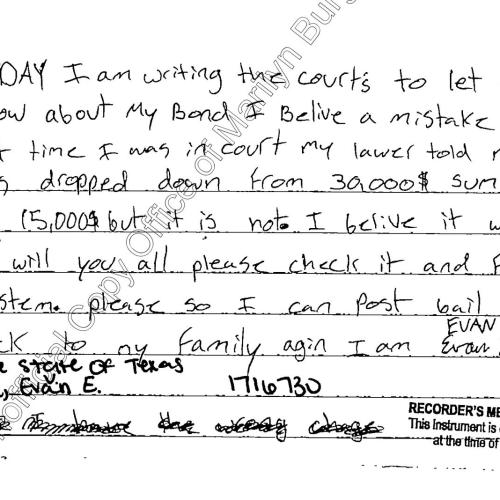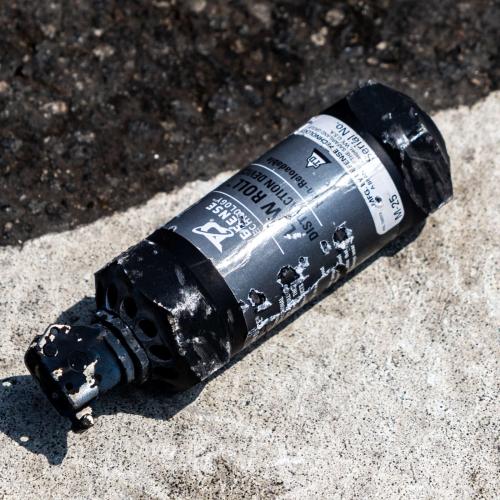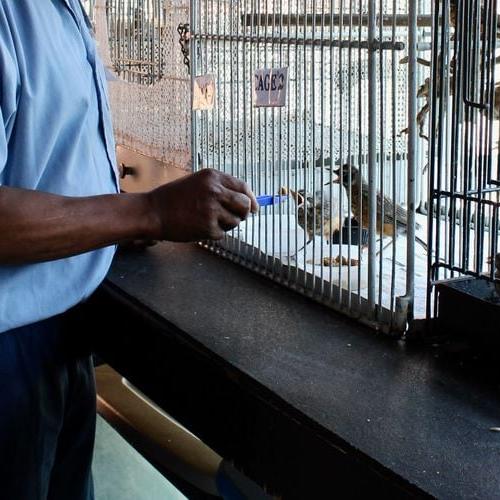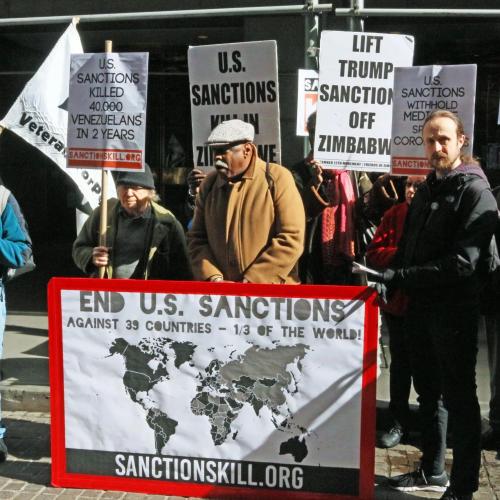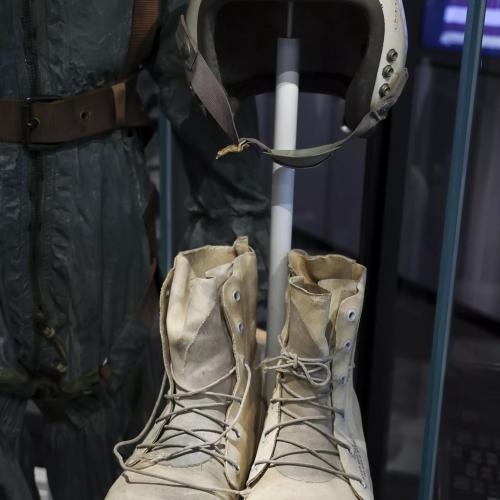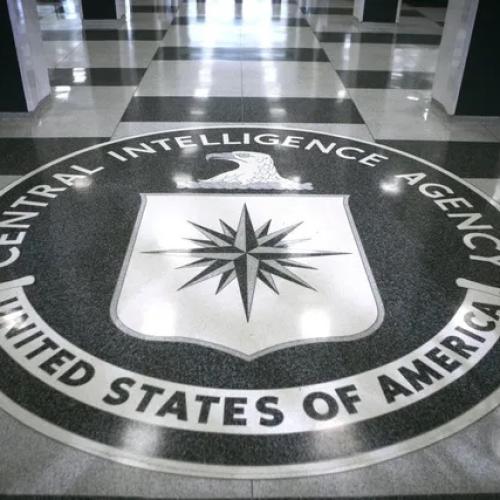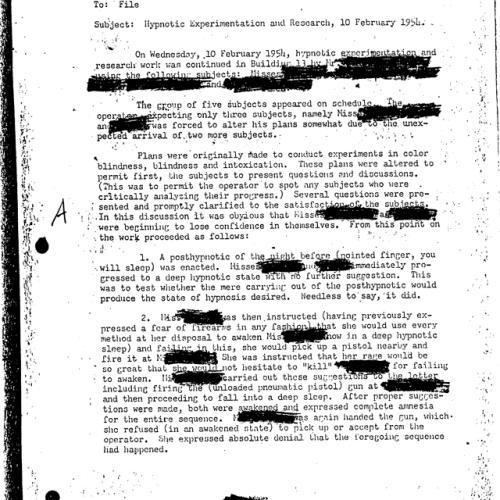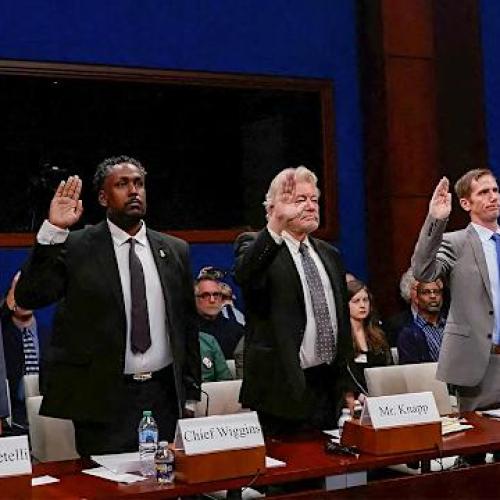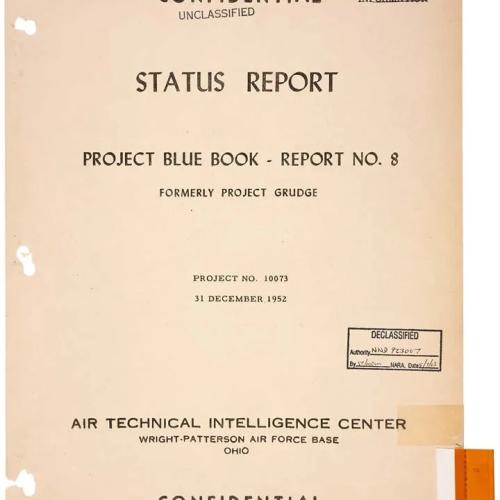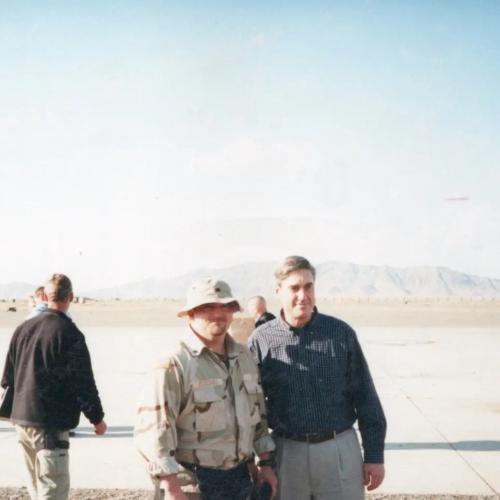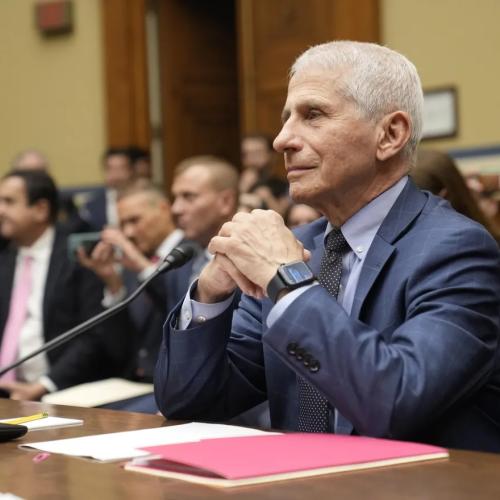Military Corruption News Stories
Below are key excerpts of revealing news articles on military corruption from reliable news media sources. If any link fails to function, a paywall blocks full access, or the article is no longer available, try these digital tools.
For further exploration, delve into our comprehensive Military-Intelligence Corruption Information Center.
The Pentagon budget is $146 billion higher than when Trump left office. Between last month’s regular appropriations and this week’s war supplemental, the 2024 Pentagon budget will be at least $953 billion. Adjusted for inflation, that’s more than the average annual U.S. military budget during World War II. A trillion-dollar Pentagon budget used to be hyperbole; now it’s almost reality. Lawmakers who want to move toward a more sensible level of military spending should know two things. The first is that public opinion is on their side. The second is that public opinion is not enough to challenge the arms industry’s influence over Washington — public pressure on Congress is needed. Political leaders demand a cash-strapped public to fund a foreign policy that’s deeply flawed and incredibly expensive. As a practical matter, the Pentagon hasn’t shown that it can even manage such gargantuan budgets, having never passed an audit. More than half of the annual military budget goes to private contractors, and the Pentagon allows these contractors to overcharge taxpayers on almost everything it buys. The arms industry goes great lengths to keep it this way. Military contractors fund influential think tanks to give their profit-driven demands a scholarly gloss, retain more lobbyists than Congress has elected officials, and pour tens of millions of dollars into elections. These tactics work. For instance, before voting to authorize $886 billion in military spending this year, each House member had received on average $20,000 in political donations from military contractors this election cycle. House members who voted for the bill accepted four times more arms industry cash than those who voted no, on average. Senators who supported the bill took five times more, on average. This correlation has been apparent in each of the last three years.
Note: Learn more about unaccountable military spending in our comprehensive Military-Intelligence Corruption Information Center.
The United States has long had the world’s biggest defense budget, with spending this year set to approach $900 billion. Yet this spending is rapidly being eclipsed by the fastest-growing portion of federal outflows: interest payments on the national debt. For the first seven months of fiscal year 2024, which began last October, net interest payments totaled $514 billion, outpacing defense by $20 billion. Budget analysts think that trend will continue, making 2024 the first year ever that the United States will spend more on interest payments than on national defense. Interest is now the third-biggest expenditure after Social Security and health. And not because any of the other programs are shrinking. While most government expenditures grow modestly from year to year, interest expenses in 2024 are running 41% higher than in 2023. Interest payments are ballooning for two obvious reasons. The first is that annual deficits have exploded, leaving the nation with a gargantuan $34.6 trillion in total federal debt, 156% higher than the national debt at the end of 2010. As a percentage of GDP, the annual deficit has nearly doubled in just 10 years, from 2.8% in 2014 to a projected 5.3% in 2024. The government is also paying more to borrow. From 2010 through 2021, the average interest rate on all Treasury securities sold to the public was just 2.1%. But in 2022, the Federal Reserve started jacking up rates to tame inflation, and the government now pays an average interest rate of 3.3%.
Note: For more along these lines, see concise summaries of deeply revealing news articles on government corruption from reliable major media sources.
The center of the U.S. military-industrial complex has been shifting over the past decade from the Washington, D.C. metropolitan area to Northern California—a shift that is accelerating with the rise of artificial intelligence-based systems, according to a report published Wednesday. "Although much of the Pentagon's $886 billion budget is spent on conventional weapon systems and goes to well-established defense giants such as Lockheed Martin, RTX, Northrop Grumman, General Dynamics, Boeing, and BAE Systems, a new political economy is emerging, driven by the imperatives of big tech companies, venture capital (VC), and private equity firms," [report author Roberto J.] González wrote. "Defense Department officials have ... awarded large multibillion-dollar contracts to Microsoft, Amazon, Google, and Oracle." González found that the five largest military contracts to major tech firms between 2018 and 2022 "had contract ceilings totaling at least $53 billion combined." There's also the danger of a "revolving door" between Silicon Valley and the Pentagon as many senior government officials "are now gravitating towards defense-related VC or private equity firms as executives or advisers after they retire from public service." "Members of the armed services and civilians are in danger of being harmed by inadequately tested—or algorithmically flawed—AI-enabled technologies. By nature, VC firms seek rapid returns on investment by quickly bringing a product to market, and then 'cashing out' by either selling the startup or going public. This means that VC-funded defense tech companies are under pressure to produce prototypes quickly and then move to production before adequate testing has occurred."
Note: Learn more about emerging warfare technology in our comprehensive Military-Intelligence Corruption Information Center. For more, see concise summaries of deeply revealing news articles on military corruption from reliable major media sources.
The Department of Defense has used taxpayer money to send elite military officers to work for some of the Pentagon’s top private contractors. From 1995 to 2021, more than 315 military officers with elite ranks as high as colonel and rear admiral have been placed at top weapons manufacturers such as Boeing, Raytheon, and Lockheed Martin, as well as other companies with billion-dollar government contracts. The arrangement has also coincided with a dramatic rise in Defense Department spending on private contractors valued in the trillions of dollars. The arrangement, called the Secretary of Defense Executive Fellows (SDEF) program, sends officers with promising military careers to work for top corporations in the defense, tech, finance, and other industries for one year. These fellows then report on how the Defense Department could incorporate some of these companies’ business practices and policies. The program has helped place corporate interests at the very heart of US military strategy. [A] report from Quincy Institute, a nonprofit think tank, is the first detailed examination of the SDEF program. The report casts doubt on the integrity of the fellowship program, calling it a “de facto lobbying tool” for private companies and a “taxpayer-funded revolving door” where more than 40 percent of the fellows have gone on to work for government contractors at some point in their postmilitary careers.
Note: For more along these lines, see concise summaries of deeply revealing news articles on corruption in the military and in the corporate world from reliable major media sources.
In recent weeks, Biden and Senate Majority Leader Chuck Schumer have been taking victory laps for the 2022 CHIPS and Science Act, a law intended to create jobs and fund innovation in a key global industry. It has already launched a series of grants, incentives and research proposals to help America regain its cutting-edge status in global semiconductor manufacturing. But quietly, in a March spending bill, appropriators in Congress shifted $3.5 billion that the Commerce Department was hoping to use for those grants and pushed it into a separate Pentagon program called Secure Enclave, which is not mentioned in the original law. The diversion of money from a flagship Biden initiative is a case study in how fragile Washington’s monumental spending programs can be in practice. Several members of Congress involved in the CHIPS law say they were taken by surprise to see the money shifted to Secure Enclave, a classified project to build chips in a special facility for defense and intelligence needs. Critics say the shift in CHIPS money undermines an important policy by moving funds from a competitive public selection process meant to boost a domestic industry to an untried and classified project likely to benefit only one company. No company has been named yet to execute the project, but interviews reveal that chipmaking giant Intel lobbied for its creation, and is still considered the frontrunner for the money.
Note: Learn more about unaccountable military spending in our comprehensive Military-Intelligence Corruption Information Center. For more, see concise summaries of deeply revealing news articles on government corruption from reliable major media sources.
Leonard Glenn Francis, and his company, Glenn Defense Marine Asia, held $200 million in contracts to resupply U.S. Navy ships and provide port security in Asia. But Francis had recently been arrested. Federal agents were shocked to discover ... that he had obtained reams of classified information from corrupt Navy officers about the itineraries of U.S. warships and submarines. Francis, a high school dropout with a prior felony record, penetrated the Navy’s elaborate counterintelligence defenses with astonishing ease — and far more extensively than the Pentagon has publicly acknowledged — by bribing ... officers for classified material. Navy counterintelligence officials failed to detect hemorrhaging leaks of military secrets to Francis while he exploited the information for his company’s bottom line. Since 2015, 10 Navy officers have admitted to leaking classified material to Francis and his firm in exchange for prostitutes, cash and other favors, the records show, making the Malaysian defense contractor among the most prolific espionage agents in modern history. After a lengthy investigation and the suspension of [Vice Adm. Ted Branch and Rear Adm. Bruce Loveless'] access to classified information, the Navy determined that Branch violated federal ethics rules and committed official misconduct by accepting meals and other gifts from Francis. Loveless was indicted and tried on bribery charges, though prosecutors dropped the case against him.
Note: Read more about the massive bribery scheme that Leonard Francis used to compromise the US Navy. For more along these lines, see concise summaries of deeply revealing news articles on military corruption from reliable major media sources.
Few Navy officers entangled themselves in the Fat Leonard corruption scandal more than Steve Shedd. In court documents and testimony, the former warship captain confessed to leaking military secrets on 10 occasions for prostitutes, vacations, luxury watches and other bribes worth $105,000. Shedd might avoid punishment for his crimes. The reason: a pattern of prosecutorial misconduct in the Fat Leonard investigation that has caused several cases to unravel so far and is threatening to undermine more. The cases collapsed after defense attorneys alleged that prosecutors from the U.S. attorney’s office in San Diego relied on flawed evidence and withheld information favorable to the defense during the 2022 bribery trial of five other officers who had served in the Navy’s 7th Fleet in Asia. After Francis’s arrest in 2013, nearly 1,000 individuals came under scrutiny, including 91 admirals. Federal prosecutors brought criminal charges against 34 defendants. Twenty-nine of them, including Shedd, pleaded guilty. Legal analysts said it is possible that even Francis might catch a break, though he has already pleaded guilty to bribing “scores” of military officers and defrauding the Navy of tens of millions of dollars. During the 2022 trial ... the prosecution team led by Assistant U.S. Attorney Mark Pletcher withheld a witness statement that contradicted some of the government’s allegations and did not divulge that one of its lead investigators had made inaccurate statements.
Note: Read more about the massive bribery scheme that Leonard Francis used to compromise the US Navy. For more along these lines, see concise summaries of deeply revealing news articles on military corruption from reliable major media sources.
Abdul Raziq [was] one of America’s most important partners in the war against the Taliban. American generals cycling through Afghanistan made regular pilgrimages to visit him, praising ... the loyalty he commanded from his men, who were trained, armed and paid by the United States and its allies. The Americans were by his side until the very end. When he was gunned down by an undercover Taliban assassin in 2018, he was walking next to the top American commander in Afghanistan, Gen. Austin S. Miller, who celebrated him as a “great friend” and “patriot.” But to countless Afghan civilians under his reign, Raziq was something else entirely: America’s monster. His battlefield prowess was built on years of torture, extrajudicial killings and the largest-known campaign of forced disappearances during America’s 20-year war in Afghanistan. He transformed the police into a fearsome combat force without constraints, and his officers abducted hundreds, if not thousands, of people to be killed or tortured in secret jails. Most were never seen again. The culture of lawlessness and impunity he created flew in the face of endless promises by American presidents, generals and ambassadors to uphold human rights and build a better Afghanistan. Raziq’s tactics ... stirred such enmity in parts of the population that the Taliban turned his cruelty into a recruiting tool, broadcasting it to attract new fighters. Many Afghans came to revile the American-backed government and everything it represented.
Note: Learn more about human rights abuses during wartime in our comprehensive Military-Intelligence Corruption Information Center. For more, see concise summaries of deeply revealing news articles on military corruption from reliable major media sources.
After receiving more than $3.8 million in 2024 campaign donations from political action committees and individuals associated with the military industry, members of the House committee overseeing Pentagon spending just inserted two provisions into an upcoming bill that would exempt many more private products and services from competitive pricing guidelines and provide contractors far more leeway in what they can charge the Defense Department. Last year’s Pentagon spending bill totaled nearly $884 billion. Over the past decade, more than half of that budget has gone to military contractors. Many of the top military contractors — including Boeing, RTX Corporation, Lockheed Martin, General Dynamics, and Northrop Grumman — have seen sizable stock-value increases since the war in Gaza began in October 2023 while shooting down shareholder efforts at increased transparency. The provisions in the 2025 Pentagon spending bill are part of the 344-page National Defense Authorization Act of 2025 (NDAA). The provisions in question — Sections 811 and 812 — make good on a wishlist of policy changes that many military companies have been lobbying on for years. “As a member of the House Armed Services Committee, I’m disappointed to see provisions in the NDAA that would allow contractors to further obscure pricing data,” Rep. Ro Khanna [said]. “This would lead to more inflated costs and waste taxpayer money when we could be investing it instead.”
Note: Learn more about unaccountable military spending in our comprehensive Military-Intelligence Corruption Information Center. For more, see concise summaries of deeply revealing news articles on military corruption from reliable major media sources.
An NSA staffer deployed to Iraq led a counterterrorism and counterintelligence mission involving forensic investigations on computers seized in raids. The staffer’s “Media Exploitation” team found pornographic videos and photos alongside thousands of audio files of the Quran and sermons, and recruitment and training CDs with video of bombings, torture, and beheadings. The team “jokingly” referred to the content as the “three big ‘P’s – porn, propaganda and prayer.” Reports and files were distributed to the NSA and other intelligence agencies. Among the customers of the material ... were the military units interrogating captured insurgents. Special Forces interrogators found the pornography “extremely useful in breaking down detainees who maintained that they were devout Muslims, but had porn on their computers,” according to an account by the NSA staffer. As the conflict with insurgents escalated in Fallujah ... NSA staff with “top-secret” clearances were deployed to the combat zone. Marines gave the NSA staff seized computers, CDs, phones, and radios directly from the battlefield, some “covered in blood.” This material, too, was used in interrogations. A former interrogator at the U.S. detention center at Guantánamo Bay, Cuba, has said ... that pornography was used at the facility to reward some detainees and as a tool against others, who were forced to look at the material. The Associated Press has also reported on the use of pornography at Guantánamo.
Note: For more along these lines, see concise summaries of deeply revealing news articles on intelligence agency corruption from reliable major media sources.
Google and Amazon are both loath to discuss security aspects of the cloud services they provide through their joint contract with the Israeli government, known as Project Nimbus. Both the Ministry of Defense and Israel Defense Forces are Nimbus customers. According to a 63-page Israeli government procurement document ... two of Israel’s leading state-owned weapons manufacturers are required to use Amazon and Google for cloud computing needs. Though details of Google and Amazon’s contractual work with the Israeli arms industry aren’t laid out in the tender document, which outlines how Israeli agencies will obtain software services through Nimbus, the firms are responsible for manufacturing drones, missiles, and other weapons Israel has used to bombard Gaza. Project Nimbus ... has already created a public uproar. Google and Amazon have faced backlash ranging from street protests to employee revolts. Following anti-Nimbus sit-ins organized at the company’s New York and Sunnyvale, California, offices, Google fired 50 employees. Emaan Haseem, [was] a cloud computing engineer at Google until she was fired after participating in the Sunnyvale protest. “A lot of us signed up or applied to work at Google because we were trying to avoid working at terrible unethical companies,” she said. “Why are we pretending that because my logo is colorful and has round letters that I’m any better than Raytheon?”
Note: When Google employees protested Project Maven, a DoD drone program that used Google technology, the Big Tech giant dropped the contract with the Pentagon in 2018. Read about how Silicon Valley has been infiltrated by intelligence agencies.
Burkina Faso’s military summarily executed more than 220 civilians, including at least 56 children, in two villages in late February, according to a new report by Human Rights Watch. “We saw the bloody corpses riddled with bullets. We were able to save a 2-year-old child whose mother was killed shielding him with her body,” a 19-year-old witness [said]. “The attackers were soldiers from our own army. They arrived on motorbikes and in vehicles, and they were armed with Kalashnikovs and heavy weapons.” The mass killings came as the U.S. counterterrorism strategy in the West African Sahel crumbled, with U.S.-trained military officers launching a long string of coups, including in Burkina Faso itself. Despite the coups and massacres, the U.S. has not cut ties with Burkina Faso, and a contingent of U.S. personnel remain in-country to “engage” with the armed forces serving the ruling junta. The United States has assisted Burkina Faso with counterterrorism aid since the 2000s, providing funds, weapons, equipment, and American advisers, as well as deploying commandos. In 2018 and 2019, alone, the U.S. pumped a total of $100 million in “security cooperation” funding into Burkina Faso, making it one of the largest recipients of U.S. military aid in West Africa. U.S.-trained Burkinabè military officers have also repeatedly overthrown their government. At the same time, militant Islamist violence skyrocketed. Burkina Faso ... suffered 7,762 fatalities from militant Islamist attacks last year.
Note: Since 2008, the US has supported at least nine coups in African countries, with a vast network of military bases scattered across the continent. For more along these lines, see concise summaries of deeply revealing news articles on military corruption from reliable major media sources.
The first trial to contend with the post-9/11 abuse of detainees in US custody begins on Monday, in a case brought by three men who were held in the US-run Abu Ghraib prison in Iraq. The jury trial, in a federal court in Virginia, comes nearly 20 years to the day that the photographs depicting torture and abuse in the prison were first revealed to the public, prompting an international scandal that came to symbolize the treatment of detainees in the US “war on terror”. The long-delayed case was brought by Suhail Najim Abdullah Al Shimari, Salah Al-Ejaili and As’ad Al-Zuba’e, three Iraqi civilians who were detained at Abu Ghraib, before being released without charge in 2004. The men are suing CACI Premier Technology, a private company that was contracted by the US government to provide interrogators at the prison. Only a handful of lower-rank soldiers faced military trials; no military or political leaders, or private contractors, were held legally accountable for what happened at Abu Ghraib or at any other facility where US detainees were tortured. As governments’ reliance on private actors in conflict zones and crisis situations has grown exponentially since the war in Iraq, the case is also a test of the courts’ ability to hold those contractors responsible for human rights abuses. The wars in Iraq and Afghanistan ... earned private companies trillions in defense and other government contracts. To this day, CACI continues to make millions in US government contracts.
Note: Read more about the horrific abuses at Abu Ghraib. For more along these lines, see concise summaries of deeply revealing news articles on military corruption from reliable major media sources.
SpaceX recently secured a classified contract to build an extensive network of “spy satellites” for an undisclosed U.S. intelligence agency, with one source telling Reuters that “no one can hide” under the prospective network’s reach. The U.S. is funding or otherwise supporting a range of defense contractors and startups working to create a new generation of space-bound weapons, surveillance systems, and adjacent technologies. In other words, America is hell-bent on a new arms race — in space. The Space Force, an entirely new branch of the military “focused solely on pursuing superiority in the space domain,” was launched in 2019, signaling renewed emphasis on space militarization as U.S. policy. Space Force’s Space Development Agency recently granted defense contractors L3Harris and Lockheed Martin and space company Sierra Space contracts worth $2.5 billion to build satellites for the U.S. military’s Proliferated Warfighter Space Architecture (PWSA), a constellation of hundreds of satellites, built out on tranches, that provide various warfighting capabilities, including the collection and transmission of critical wartime communications, into low-Earth orbit. The PWSA will serve as the backbone of the Pentagon’s Joint All-Domain Command and Control project, an effort to bolster warfighting capacities and decision-making processes by facilitating “information advantage at the speed of relevance.” Other efforts are just as sci-fi-esque.
Note: Learn more about emerging warfare technology in our comprehensive Military-Intelligence Corruption Information Center. For more, see concise summaries of deeply revealing news articles on military corruption from reliable major media sources.
A devastating new Defense Department inspector general report finds that ... the Army, the primary Defense Department proponent for battlefield influence and deception, has failed to staff its own psyops units. Recent revelations about the Pentagon’s psyops call into question just how effective these programs really are. In 2022, an extensive report by the Washington Post revealed widespread concern inside DOD that psychological operations were being waged both recklessly and ineffectively by the armed services. The report was spurred by research from the Stanford Internet Observatory which detailed over 150 instances of Facebook and Twitter removing accounts linked to U.S. military influence campaigns. The 2019 National Defense Authorization Act gave the Defense Department a green light to engage in offensive psyops campaigns, including clandestine operations that align with the same definition as covert, meaning that the armed forces can carry out influence operations that deny an American connection. After the congressional authorization, an unnamed defense official said, “Combatant commanders got really excited” and were “eager to utilize these new authorities. The defense contractors were equally eager to land lucrative classified contracts to enable clandestine influence operations.” Researchers at Stanford ultimately found that despite the dozens of Defense Department obscured accounts spreading misinformation, the effect on foreign populations was far less than information conveyed overtly from self-identified U.S. sources.
Note: Read about the Pentagon's secret army of 60,000 undercover operatives that manipulate public perception. Learn more about the history of military-intelligence influence on the media in our comprehensive Military-Intelligence Corruption Information Center.
According to Wikipedia, the United States has been involved in 107 wars since its founding and 41 of these were fought against the Indigenous peoples of North America. Most of these wars are ignored by schools, textbooks and the media, but the pressure to become involved in additional conflict is ever-present. At times the number of private contractors has been larger than that of enlisted troops. In April 2008, there were 163,900 contractors and 160,000 enlisted troops in Iraq. But when most media reported the number of Americans in the war zone, they reported the number of enlisted troops and not the contractors. This results in a predictable under-estimate of American involvement and additional earnings for contractor providers. Every year, the defense industry donates millions of dollars to the campaigns of members of Congress, creating pressure on the legislative branch to fund specific weapons systems, maintain an extremely high Pentagon budget, and add ever more military spending. In 2022 the weapons/defense industry donated $10.2 million to the 84 members of the House and Senate Armed Services Committees. And the wars continue. In his book “The United States of War,” David Vine reports that, “In the nearly two decades since U.S. forces invaded Afghanistan and Iraq, the U.S. military has fought in at least 22 countries.” If we are to escape a future of forever wars, all justifications for war should be questioned and debated before the killing starts.
Note: Learn more about war failures and lies in our comprehensive Military-Intelligence Corruption Information Center. For more, see concise summaries of deeply revealing news articles on war from reliable major media sources.
A Silicon Valley defense tech startup is working on products that could have as great an impact on warfare as the atomic bomb, its founder Palmer Luckey said. "We want to build the capabilities that give us the ability to swiftly win any war we are forced to enter," he [said]. The Anduril founder didn't elaborate on what impact AI weaponry would have. But asked if it would be as decisive as the atomic bomb to the outcome of World War II he replied: "We have ideas for what they are. We are working on them." In 2022, Anduril won a contract worth almost $1 billion with the Special Operations Command to support its counter-unmanned systems. Anduril's products include autonomous sentry towers along the Mexican border [and] Altius-600M attack drones supplied to Ukraine. All of Anduril's tech operates autonomously and runs on its AI platform called Lattice that can easily be updated. The success of Anduril has given hope to other smaller players aiming to break into the defense sector. As an escalating number of global conflicts has increased demand for AI-driven weaponry, venture capitalists have put more than $100 billion into defense tech since 2021, according to Pitchbook data. The rising demand has sparked a fresh wave of startups lining up to compete with industry "primes" such as Lockheed Martin and RTX (formerly known as Raytheon) for a slice of the $842 billion US defense budget.
Note: Learn more about emerging warfare technology in our comprehensive Military-Intelligence Corruption Information Center. For more, see concise summaries of deeply revealing news articles on corruption in the military and in the corporate world from reliable major media sources.
The U.S. Navy is reportedly preparing to test a hypersonic weapon as part of a joint developmental program with the U.S. Army, which aims to unleash the military’s Long-Range Hypersonic Weapon (LRHW) capabilities. The forthcoming test will involve the C-HGB, which relies on the Navy’s booster rocket motor to propel the weapon to hypersonic speeds. Once the rocket is ejected, the C-HGB can glide at speeds of Mach 5 or greater.Production of the C-HGB for the Army and the Navy has been underway for several years in cooperation with Dynetics ... who was contracted to develop the prototypes. Dynetics’ development of the C-HGB prototypes marks the first time that a domestic private sector entity has been tasked with building hypersonic weapons. Known as Dark Eagle, the Army says its LRHW will be capable of reaching targets within a range of 1,725 miles and reportedly traveling at speeds exceeding 3,800 miles per hour. Presently, the U.S. is racing against similar hypersonic developments being undertaken by Russia and China, who have been actively testing similar weapons capabilities for years. Earlier this month, it was revealed that the U.S. Air Force conducted a test with a prototype hypersonic missile in the Marshall Islands. Formally known as the AGM-183, the missile is an air-launched rapid response weapon (ARRW), a type of hypersonic air-to-ground missile that was the result of a $480 million contract granted to Lockheed Martin in 2018.
Note: Learn more about emerging warfare technology in our comprehensive Military-Intelligence Corruption Information Center. For more, see concise summaries of deeply revealing news articles on military corruption from reliable major media sources.
Billionaire Elon Musk’s brain-computer interface (BCI) company Neuralink made headlines earlier this year for inserting its first brain implant into a human being. Such implants ... are described as “fully implantable, cosmetically invisible, and designed to let you control a computer or mobile device anywhere you go." They can help people regain abilities lost due to aging, ailments, accidents or injuries, thus improving quality of life. Yet, great ethical concerns arise with such advancements, and the tech is already being used for questionable purposes. Some Chinese employers have started using “emotional surveillance technology” to monitor workers’ brainwaves. Governments and militaries are already ... describing the human body and brain as war’s next domain. On this new “battlefield,” an era of neuroweapons ... has begun. The Pentagon’s research arm DARPA directly or indirectly funds about half of invasive neural interface technology companies in the US. DARPA has initiated at least 40 neurotechnology-related programs over the past 24 years. As a 2024 RAND report speculates, if BCI technologies are hacked or compromised, “a malicious adversary could potentially inject fear, confusion, or anger into [a BCI] commander’s brain and cause them to make decisions that result in serious harm.” Academic Nicholas Evans speculates, further, that neuroimplants could “control an individual’s mental functions,” perhaps to manipulate memories, emotions, or even to torture the wearer. In a [military research paper] on neurowarfare: "Microbiologists have recently discovered mind-controlling parasites that can manipulate the behavior of their hosts according to their needs by switching genes on or off. Since human behavior is at least partially influenced by their genetics, nonlethal behavior modifying genetic bioweapons that spread through a highly contagious virus could thus be, in principle, possible.
Note: The CIA once used brain surgery to make six remote controlled dogs. For more, see important information on microchip implants and CIA mind control programs from reliable major media sources.
The United Nations has delivered more than $2.9 billion in cash to Afghanistan since the Taliban seized control, resulting in the flow of U.S. funds to the extremist group, according to a recent government report. The U.N. deposits the cash into a private Afghan bank and disburses funds to the agency’s aid organizations and nonprofit humanitarian groups. But the money does not stop there. Some winds up at the central bank of Afghanistan, which is under the control of the Taliban. The group took over the country after the withdrawal of U.S. forces in August 2021. The report, from the Special Inspector General for Afghanistan Reconstruction, provides the first detailed account of how U.S. cash falls under the control of the Taliban and adds to a growing body of evidence that contributions to the U.N. are not always reaching Afghans in need. After getting the money from the Federal Reserve Bank of New York, the U.N. flies shrink-wrapped $100 bills to the Kabul International Airport. The money arrives on a regular basis, as much as $40 million at a time. “Aid diversion does happen, and when it does, humanitarian work has to halt and solutions need to be found,” said one U.N. official who was not authorized to make public comment. “There are cases where the Taliban seek to take control of distribution according to their priorities, or other cases where aid work is stopped altogether.” The only way to stop [the diversion of foreign aid] would be to halt the flow of money.
Note: Read more about how the Taliban are now arms dealers after the US military left billions of dollars worth of weapons in Afghanistan. Learn more about war failures and lies in our comprehensive Military-Intelligence Corruption Information Center.
Important Note: Explore our full index to revealing excerpts of key major media news stories on several dozen engaging topics. And don't miss amazing excerpts from 20 of the most revealing news articles ever published.





















